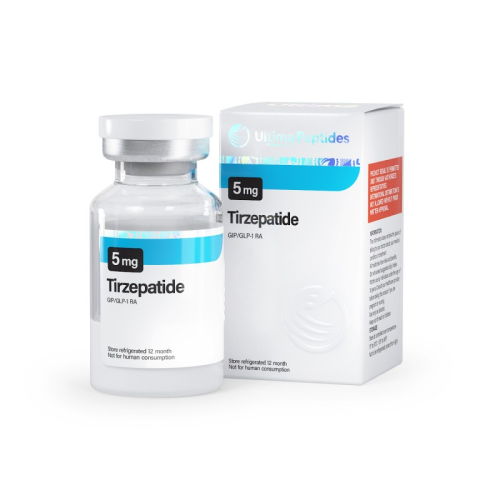Ultima-Tirzepatide
- Brand: Ultima Pharmaceuticals - US
- Product Code: Ultima-Tirzepatide
- Availability: In Stock
-
$120.00
ACTIVE HALF-LIFE
5 days
CLASSIFICATION
Dual GIP and GLP-1 Receptor Agonist
MANUFACTURER
Ultima Pharmaceuticals - US
WAREHOUSE
USA Warehouse 5
SUBSTANCE
GIP/GLP-1 RA
,
Tirzepatide is a synthetic peptide known for its ability to lower blood sugar levels. It promotes the secretion of insulin in both the initial and subsequent phases while also reducing glucagon levels, all in response to glucose levels.
Additionally, tirzepatide has been found to slow gastric emptying, decrease both fasting and post-meal glucose levels, reduce appetite, and lead to weight loss in individuals with type 2 diabetes. It can also enhance insulin sensitivity.
The drug is linked to a C20 fatty diacid via a hydrophilic connector at the lysine position 20, resulting in a strong binding to albumin in the bloodstream, which extends its half-life.
GLP-1 (glucagon-like peptide-1) receptors (GLP-1R) are present in various parts of the body, including pancreatic beta-cells and the gastrointestinal tract, and are implicated in the development of type 2 diabetes. GLP-1R signaling plays a crucial role in regulating blood sugar by increasing insulin secretion in response to glucose, delaying gastric emptying, lowering glucagon levels, and promoting weight loss through activation of appetite-suppressing pathways in the brain. Both glucose-dependent insulinotropic polypeptide (GIP) and GLP-1 are peptide hormones that aid in maintaining glucose levels, primarily stimulating insulin secretion from pancreatic beta-cells. However, GIP is considered the predominant incretin hormone that triggers insulin release after eating.
While the precise mechanism of tirzepatide is not entirely clear, its ability to activate both GIP and GLP-1 receptors likely contributes to its effects on blood sugar and weight management. Research indicates that combining GIP with a GLP-1R agonist leads to a greater insulin response and suppression of glucagon secretion than administering either hormone alone. Tirzepatide binds with high affinity to both GIP and GLP-1R. In laboratory studies, it shows comparable binding affinity to GIP receptors as native GIP, although it has a GLP-1R affinity that is five times lower than that of native GLP-1. Tirzepatide effectively activates GLP-1R signaling to promote glucose-dependent insulin secretion, utilizing either the GIP receptor (GIPR) or the GLP-1R. However, more research is needed to clarify the role of GIPR activation in the drug’s mechanism, as findings regarding its impact on blood sugar and weight control in both preclinical and clinical studies have been inconsistent.

